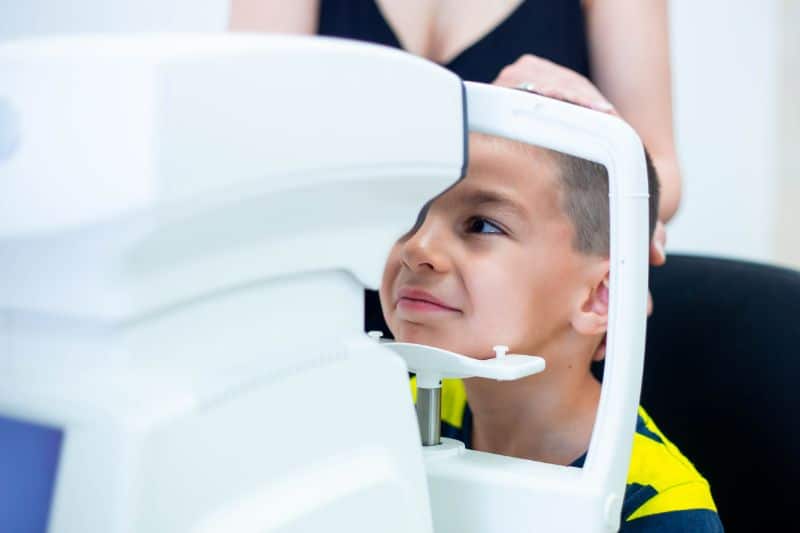Astigmatism is a common and generally treatable imperfection in the curvature of the eye that causes blurred distance and near vision. Astigmatism occurs when either the front surface of the eye (cornea) or the lens inside the eye has mismatched curves. Instead of having one curve like a round ball, the surface is egg-shaped.
If you are concerned about your vision, please call us on 07 3345 3383 to make an appointment!

Children may not realise they have blurry vision.
And they are unlikely to complain about blurred or distorted vision. But without treatment, astigmatism can:
- impact a child’s performance in school and sports
- lead to amblyopia (lazy eye)
This is why early childhood eye screenings are so important. We recommend eye tests for children at the following stages:
- 4 years old
- Yearly between pre-school and grade 3
- Late primary school

How Do You Know If You Have Astigmatism?
Optometrists can diagnose astigmatism during a comprehensive eye exam. Testing may include:
- Eye chart. You will be asked to read letters on an eye chart. This tests for visual acuity or sharpness of your vision at certain distances.
- Phoropter. This is where you look through a large binocular-like device and tell your optometrist which lens helps you see better.
- Autorefractor. This device also helps measure your astigmatism or other refractive error. It works by shining a light into the eye and measuring how it changes as it bounces off the back of the eye.
- A topography map measures the curve of your cornea and helps find imperfections and distortions on the corneal surface.
The exact cause of astigmatism isn’t known, and treatment might be necessary depending on the extent of this eye condition.
Wearing contact lenses or glasses can improve vision. Treatment not only helps vision, it can reduce the risk of complications like a lazy eye, eye strain, and headaches.
Click here to find out more about astigmatism and treatment options.
If you have any questions about astigmatism, please contact us on 07 3345 3383
Book a comprehensive assessment today!
